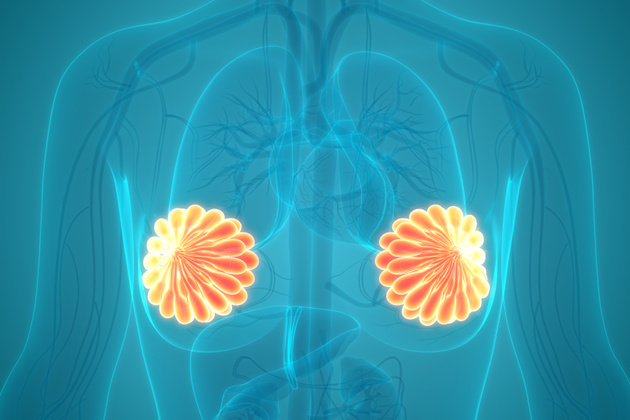Dense Breast Tissue (Dens Breast)
Breast tissue consists of lobules that produce milk, channels (ducts) that transmit milk to the nipple, and fatty tissue and fibrous connective tissue as support tissue. Lobules and milk ducts form the structure of the breast and are responsible for milk production. Fat and fibrous tissues give the breast its shape. The combination of fat and fibrous tissue is called “granular” structure.

This condition is entirely a genetic feature. Functionally, in terms of milk production, there is no difference between dense breast and lipoma (fat tissue-dominated) breast. This is not an abnormal situation and is a frequently encountered structural feature.
Dense breast tissue is more common in young women and small breast structures. However, it can occur in all age groups and all breast structures. As we age, the density of the breast decreases.
Malignant masses may be overlooked in dense breasts. This is because each of the structures that make up the breast tissue transmits X (X-ray) rays to different degrees in mammography. Since the resistance of fat tissue is low, most of the X-ray passes through, causing these parts to appear black. Since glandular and fibrous tissues are relatively more resistant, some of the X-ray can pass through. This causes these tissues to appear grey/white. Cancer tissue is also a dense tissue and appears gray/white in color because it transmits X-rays at very low rates. This feature is the main reason why masses can be overlooked in dense breasts.
The presence of dense breast tissue means a moderate increase in risk. The screening program is shaped by the radiologist, taking other risk factors into consideration. Depending on breast density, screening may be continued with mammography, or breast ultrasonography and breast MRI examination may also be performed.
Dense breast tissue does not pose a high risk when other risk factors such as age, early menstruation/late menopause, family history of breast cancer, or having a BRCA gene mutation are taken into account.
General features of dense breast
- Dense breast may cause erroneous interpretations in mammography.
- Its incidence decreases in postmenopausal women
- Breast ultrasonography is preferred in addition to mammography or directly
- Cancer risk is 4-6 times higher than normal density breast
- While the ability of mammography to detect cancer in normal breast tissue is 98%, this rate is 48% in dense breast.
- Cancer is more likely to recur in dense breasts.
Breast density is a feature that can only be understood by mammography. A decision about breast density cannot be made by examination or ultrasonography. Two BIRADS (Breast Imaging Reporting and Data System) scales are used by radiologists and ACR (American College of Radiology) BIRADS scale breast density values are as follows;
- Type 1 = Fatty Tissue Breast consisting almost entirely of fatty tissue: Mammography results are sensitive enough to show even the smallest tumors.
- Type 2 = Sparse Fibroglandular (glandular) Tissue Breast with some glandular and fibrous tissue within the fatty tissue: There is a minor decrease in sensitivity.
- Type 3 = Tissue with Heterogeneous Density Breast where glandular and fibrous tissue is more abundant and small lesions are difficult to see: Medium sensitivity results are obtained.
- Type 4 = Very Dense Tissue Breast, which consists almost entirely of glandular and fibrous tissues in mammography and masses can be missed: Low sensitivity results are obtained.
Type 3 and 4 breasts are considered dense breasts.
The other BIRADS scale categorizes mammography results. Generally, reports take this scale into account;
- 0 = An additional display is needed for comparison.
- 1 = Negative.
- 2 = Appears benign.
- 3 = Likely benign; Short-term follow-up is recommended.
- 4 = Abnormal cells are suspected; Biopsy is recommended.
- 5 = Highly likely to be malignant
- 6 = Proven malignant tumor.



